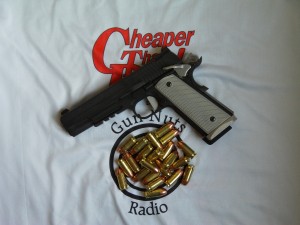I have enjoyed the benefits of being a sponsored shooter in the past; and many shooters who come into the shooting sports want to become “sponsored” as though suddenly bullets and money will rain down from the heavens and magically turn them into grandmasters.

Of course, that’s frequently not the case. After kicking it around in my head for a while, I’ve decided to a multi-part piece on becoming a sponsored shooter and what it really means. In part 1, we’re going to look at the different types of sponsorship available. One of the first things that any shooter who wants to be sponsored needs to understand is that not all sponsorships are created equal. Just to look at my own past sponsorships, I’ve had sponsors that gave me product, sponsors that gave me cash and product, sponsors that reimbursed my expenses, etc. We’re going to break sponsorships down into four different types, and understand that within these types there is considerable variation as well. This is a broad look at what’s out there, not a detailed analysis.
- Employee shooters – the highest tier of sponsorship, the shooter is an employee of the sponsoring organization. Glock has used this model in the past, S&W uses it for some of their shooters. Within the “employee” model, the shooter could be someone where shooting is an “other duty” that supplemental to their main job (usually marketing/sales) or their primary job is to shoot guns.
- Full ride non-employees – This is usually what people think of when they think of “sponsored shooter.” The shooter’s sponsor takes care of the shooter’s gear and match needs. Items usually covered are guns, ammo, and match fees. A sub-category of the full-ride is a full-ride in limited scope; for example when I shot for CTD, they covered 100% of my ammo needs, but I was responsible for sourcing my own guns, holsters, and other gear.
- Gear/Other Compensation – This is the most common model of sponsorship, where a shooter will receive free product from one sponsor in exchange for wearing a logo and otherwise representing that sponsor. A good example of this is a company that manufacturers bullets giving a shooter 10,000 bullets for the shooter to use; a gunsmith building a custom gun for free, etc.
- Discount/Pay-to-play – These are in my opinion sponsorships only in the loosest sense of the term. This model the best a shooter receives is a discount on product and gear that they still have to buy themselves; thus pay-to-play. While discounts are nice, savvy shoppers should be able to find discounts on their own without having to rep another company.
Now, that really is a 10,000 foot view of sponsorships – as I mentioned above, there’s a tremendous amount of variation within each of those models. To continue using me as an example, right now I’m an employee of my sponsor (GunUp) who covers me for certain match related expenses, but not 100%.
One of the things I didn’t cover in great detail are contingency programs – the short explanation is you use a certain company’s gear, and if you meet certain performance metrics then you get some kind of compensation, be it cash money or more gear. I’m a big fan of contingency programs, because they incentive shooters to do something they’re already doing without making that shooter buy a product they may not have purchased otherwise.
We’ll have part 2 in the series up on Friday, where I’ll take a look at becoming a sponsored shooter and what values many major organizations find valuable. Surprise surprise…it isn’t always shooting skill.